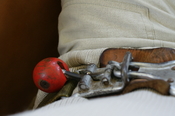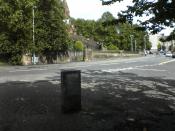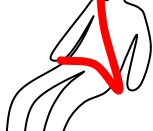In Donoghue v Stevenson [1932] it was held that all owe a 'duty of care' to 'their neighbour'. However, the 'guidelines' which can be taken from Caparo v Dickman 1990 are that there are three separate pre-requisites to the imposition of a duty of care. Firstly, it must be 'foreseeable' that if one party acts carelessly. the other party will suffer injury or damage; secondly, there must be a sufficient degree of 'proximity' between the two parties, that is a sufficient 'closeness' between them; and thirdly, the imposition of a duty of care must be 'fair, just and reasonable'. There is no doubt as to whether Bill committed a negligent act. I will be discussing the liability of Bill for the harm suffered by Jane, Sally and Ranjit.
In advising the potential parties as to whether Bill is liable for the harm suffered we must consider which parties have been wronged and then establish if they are owed a duty of care, whether there was a breach of that duty and whether the breach caused the damage.
The accidents themselves were caused by Bill; he clearly owed a duty of care as a motorist and was negligent. Applying the 'but for test', but for the actions of Bill Ranjit would not have sustained damage to his shop window and products therefore should be held liable of damages of ã2000. 'Foreseeability' means whether a hypothetical 'reasonable person' would have foreseen damage in the circumstances. Bill would have forseen that if his car was to go into a shop window that damages would have occurred. Smith v Littlewoods Organisation Ltd [1987] Taking Bill's age into consideration, Children cannot plead infancy as a defence to a tort. However, children and young people will usually be judge by the objective standard of the ordinarily...


